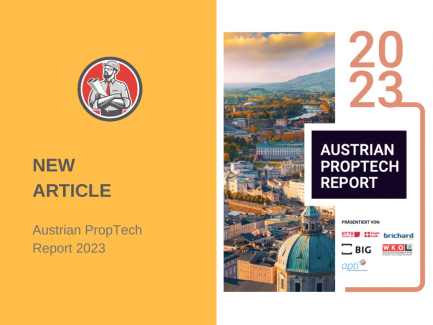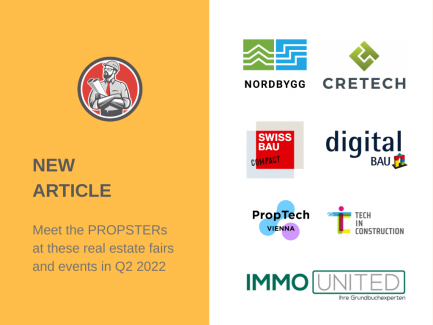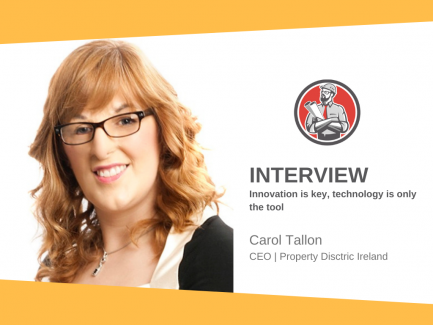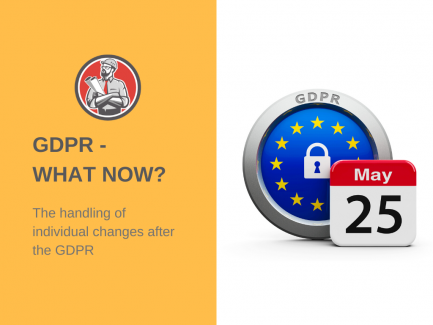The Growing Importance of Customer-Centricity in Real Estate

As the digital transformation of the real estate industry gains momentum, the property-buying process is on the verge of a sea change.
This article explores some of the factors driving the digitisation of the real estate industry. We explain the link between digitalisation and customer-centricity; before highlighting why companies should begin digitising their operations in order to meet changing customer expectations. We’ll also give details on how the PROPSTER platform’s features help real estate companies empower their customers.
What’s Going On in Real Estate?
Think of the ways in which the finance and automotive industries have changed from the perspective of the customer.
Digital banking allows customers to complete a range of tasks using a smartphone – even paying in cheques! When buying a car, eCommerce software allows customers to configure all the details from the kitchen table. The customer journey has certainly come a long way since Henry Ford’s famous line; “any customer can have a car painted any colour they want, so long as it is black.”
In comparison, the real estate industry has been slow to introduce such customer-centric processes. However, in recent years, the industry has reached a point where the technology and will to change are both present. Just look at the growth in the level of investment in PropTechs as evidence of this.
When we consider the factors driving this shift, technology is obviously central to enabling change. Better web and eCommerce solutions and improvements in 3D modelling software and graphic design play an important role. Processes that were previously restricted to the physical space can now be accurately represented in the digital space; i.e. online configuration.
Embrace substantial changes
The availability of better technology doesn’t necessarily lead to mainstream uptake. Usually, a number of factors come together to form an incentive for businesses to embrace change. Of course, the impact of Covid19 accelerated the shift towards remote solutions across industries. However, there are other contributing factors that shouldn’t be overlooked.
The rising cost of commodities, including essential building materials like steel, as well as supply chain issues are driving costs up and squeezing margins. There’s also the need to continue decarbonising business operations and then there are other legislative pressures including fiscal policies such as the UK Gov’s Residential Property Developer Tax, due to come into effect in 2022.
Real estate businesses are operating in an increasingly challenging business environment. There’s therefore a need for new systems and digital tools that can improve the efficiency and effectiveness of processes.
A Welcome Change
As the digital transformation of the real estate industry continues to gather pace, the expectations of buyers are changing. Buyers of real estate will begin to seek out those companies that can provide exceptional digital experiences that are built around customer-centricity.
“The customer is increasingly more powerful in the marketplace. It’s a wider societal trend that we’re now seeing have more impact in the property market: the buyer rules. Historically in the UK property market, the strength of the market has meant that the developer has ruled. Developers have never really needed to ‘love their buyers’ as much as they do now.” Dominic Grace FRICS, Principal at Dominic Grace Advisory and former Head of London Residential Sales with Savills UK.
Now is the time for real estate businesses to start working seriously on implementing customer-centric approaches.
Customer-centricity in real estate is about empowering customers. It’s about integrating the buyer into the development process so that their preferences and needs are taken into account. It’s about reducing information asymmetries, and operating more transparently. Ultimately, customer-centricity in real estate is leading towards the needs of end-users being prioritised.
Integrating the needs of end-users will ultimately lead to improvements in the liveability of real estate. That is certainly a welcome change.
Social media and other digital platforms mean end-users have the power to influence others and affect the reputation of the businesses they interact with. Homeviews is an independent reviews site where buyers and tenants are invited to give their opinion on property developments. Platforms such as Homeviews highlight the need for developers to focus on customer-centricity in real estate and liveability.
As customers begin to expect more from the spaces they live in, there’s an impetus for developers and agents to move away from viewing the property-buying process as a one-time transaction. We believe that the relationship with buyers should be and treated as an ongoing concern and maintained after handover.
Empower Your Customers with PROPSTER
We know where PROPSTER fits into the industry. Our digital customer platform enables real estate companies to bridge the gap between their current processes and the changing expectations of customers.
“Our platform puts customers first and gives them control and confidence in what has previously been a fragmented process – from off-plan sales through the configuration and specification of fixtures and furnishings, and then in the way snagging and handover is completed.” Milan Zahradnik, PROPSTER founder & CEO
As well as enabling customer-centric approaches, PROPSTER’s feature set helps companies realise efficiencies across their operations. By digitising processes you empower your customers, effectively giving them more control and more opportunities for input over the course of the buying process.
Features that lead to customer-centricity in real estate
PROPSTER Online Configurator allows buyers to view various fit-out options before making choices on the final configuration of their home. As well as benefiting developers by facilitating off-plan sales, the Online Configurator presents obvious benefits to buyers. As well as being a convenient way to complete the purchasing process, the online configurator personalises the experience by giving buyers the freedom to choose the fit-out that’s most suitable to their needs.
Clients offering online configuration have reported that most customers opt for a combination of both digital and physical touchpoints.
For example, KRÄMMEL Bau (a Germany-based property developer working on projects globally) reported that, out of off-plan sales within their ‘Greenside Ottobrunn’ project, 17% of buyers completed configuration entirely online. Most buyers opted for a combination of online configuration followed by in-person meetings to discuss and confirm their selections. The online configurator was a boost for the sales team as it sped-up the sales process significantly. The online configurator meant that those buyers who did attend in-person appointments came much better prepared and needed less time in their individual appointments with sales staff.
A step towards to more customer-centricity in real estate
Online handover & defect management is a step towards a customer-centric property-buying process. PROPSTER Connect allows you to collaborate with project participants, exchange and then sign-off on key handover documents online.
By digitising the defect management process you streamline your workflows. PROPSTER enables customers to create and upload comprehensive defect reports using their own devices. By involving customers in a digitised process you save significant resources in terms of time and money and improve transparency during the warranty period.
PROPSTER Home is a core module for maintaining relationships with customers. Services is a key feature within PROPSTER Home that allows customers to purchase a range of additional services. On the face of it, this feature offers a convenient way for customers to ensure their house move goes smoothly by organising additional services such as TV & internet, insurance and removals companies within the same platform that they configured and purchased the property. We see Services as more than that though. We see Services as a way for our clients to improve the liveability of their developments for end-users.
Guiding Customers Through Each Stage of The Process
As companies across the real estate industry begin to digitise their offerings, we’re focussing on continually improving the functionality of the PROPSTER platform.
Our own customer-centric approach sees us not only consider how our clients will use the platform but also how our clients’ customers will use it. Feedback and close contact with our clients is therefore essential if we’re to continue improving the overall user experience. In this regard, our team is available to offer full support to both clients and their customers via our 1st level support package.
For more on how PROPSTER helps real estate companies integrate customer-centric approaches, check out the pages on PROPSTER’s core modules and associated features.











